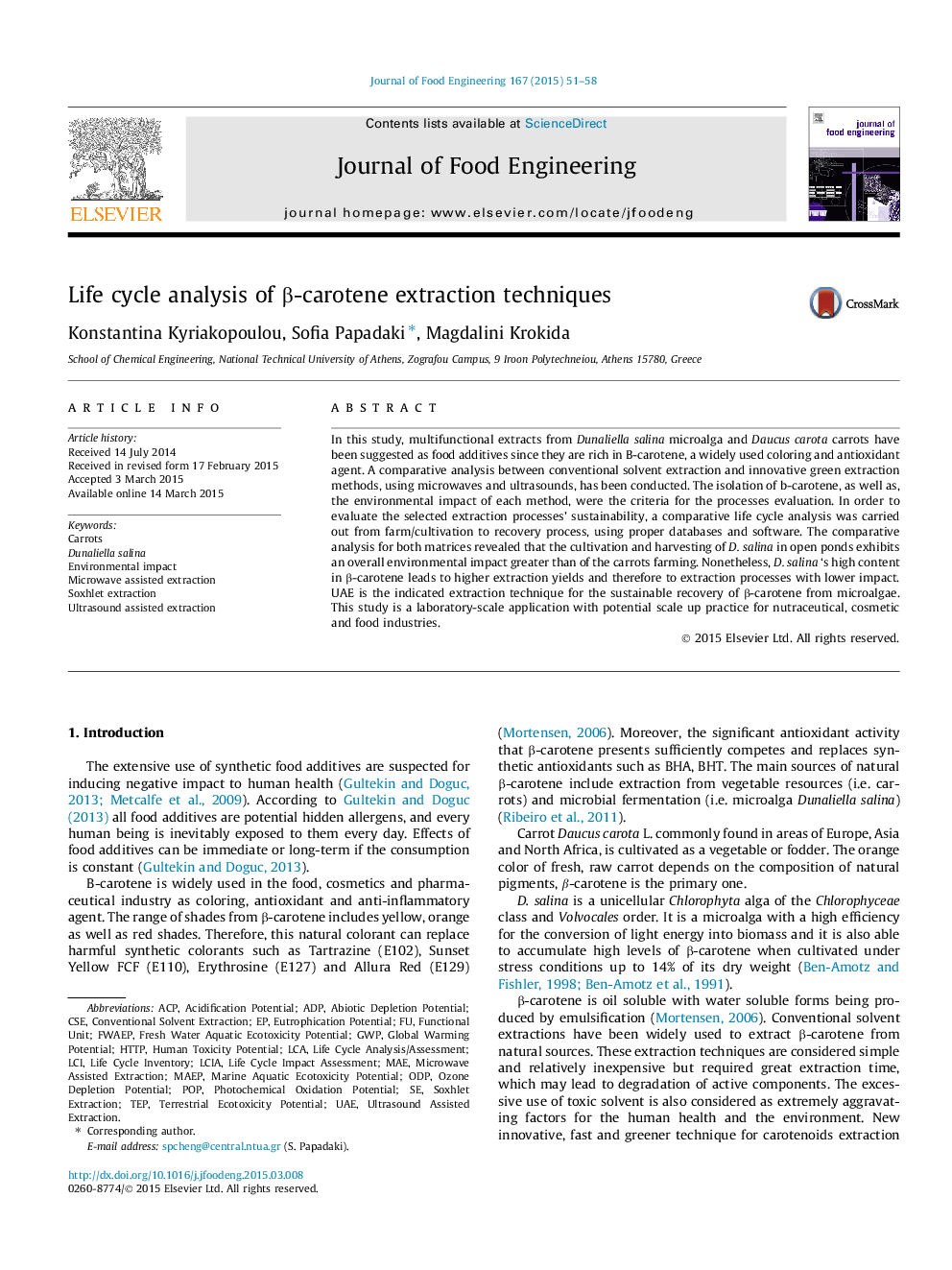| Article ID | Journal | Published Year | Pages | File Type |
|---|---|---|---|---|
| 222872 | Journal of Food Engineering | 2015 | 8 Pages |
•The impact of microalgae cultivation is higher than carrot farming.•Drying is crucial for the environmental footprint of total process for both matrices.•Microwave heating is recommended for the extraction of β-carotene from carrots.•For β-carotene recovery from D. salina ultrasound assisted extraction is preferred.•Food grade solvents affect eutrophication, fresh water aquatic and terrestrial ecotoxicity potential.
In this study, multifunctional extracts from Dunaliella salina microalga and Daucus carota carrots have been suggested as food additives since they are rich in B-carotene, a widely used coloring and antioxidant agent. A comparative analysis between conventional solvent extraction and innovative green extraction methods, using microwaves and ultrasounds, has been conducted. The isolation of b-carotene, as well as, the environmental impact of each method, were the criteria for the processes evaluation. In order to evaluate the selected extraction processes’ sustainability, a comparative life cycle analysis was carried out from farm/cultivation to recovery process, using proper databases and software. The comparative analysis for both matrices revealed that the cultivation and harvesting of D. salina in open ponds exhibits an overall environmental impact greater than of the carrots farming. Nonetheless, D. salina ‘s high content in β-carotene leads to higher extraction yields and therefore to extraction processes with lower impact. UAE is the indicated extraction technique for the sustainable recovery of β-carotene from microalgae. This study is a laboratory-scale application with potential scale up practice for nutraceutical, cosmetic and food industries.
